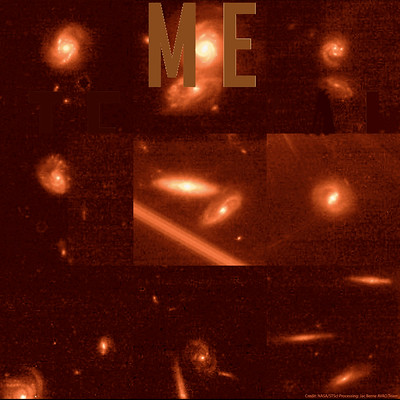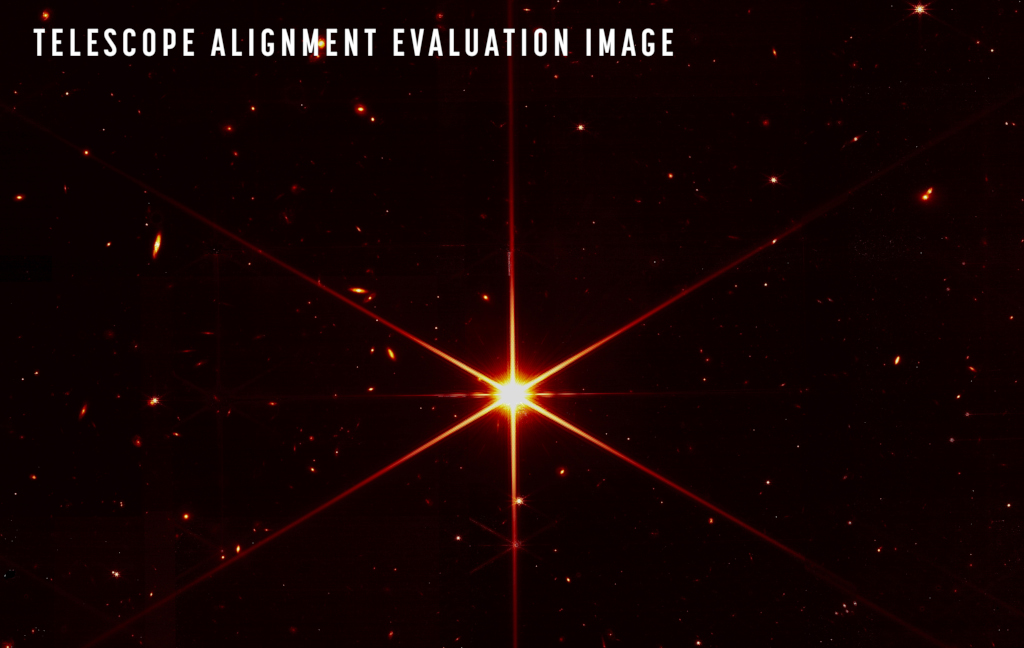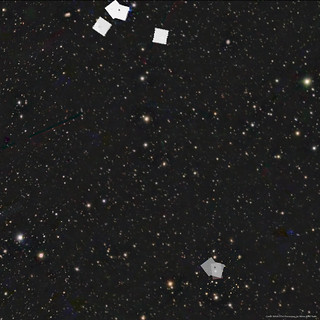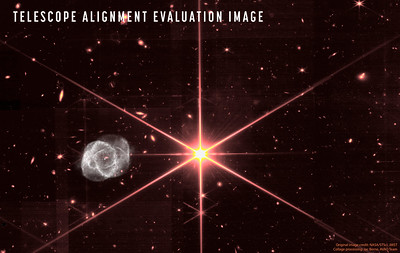Comments and questions about the
APOD on the main view screen.
-
Sam Waldon
Post
by Sam Waldon » Sat Mar 19, 2022 4:33 am
What is the magnitude of 2MASS J17554042+6551277?
-
alter-ego
- Serendipitous Sleuthhound
- Posts: 1123
- Joined: Mon Apr 21, 2008 4:51 am
- Location: Redmond, WA
Post
by alter-ego » Sat Mar 19, 2022 4:41 am
mv = 10.95
Clicking the 2MASS J17554042+6551277 link will take you to the SIMBAD data page for that star. There are several magnitudes for different spectral bands.
A pessimist is nothing more than an experienced optimist
-
Sam Waldon
Post
by Sam Waldon » Sat Mar 19, 2022 4:59 am
Thank you for a prompt and helpful response!
-
Ann
- 4725 Å
- Posts: 13838
- Joined: Sat May 29, 2010 5:33 am
Post
by Ann » Sat Mar 19, 2022 5:32 am
alter-ego wrote: ↑Sat Mar 19, 2022 4:41 am
m
v = 10.95
Clicking the 2MASS J17554042+6551277 link will take you to the SIMBAD data page for that star. There are several magnitudes for different spectral bands.
Thanks, alter-ego. However, I noticed that there was no spectral class given for 2MASS J17554042+6551277. As for the fluxes, the star appears to be ~1 magnitude brighter in V than in B, and it gets ever brighter at still longer wavelengths, but not enormously so. I would guess that this is a K-type star. The distance to it, based on its Gaia parallax, appears to be ~2,000 light-years, or ~609 parsecs. Its absolute V magnitude might be around +2, and its V luminosity might be 13 times that of the Sun. Of course, since this star is most likely cooler than the Sun, its absolute bolometric luminosity is going to be brighter still compared with the Sun.
2MASS J17554042+6551277 is about as bright as
Proxima Centauri in our skies - both are eleven magnitude stars, even though a tiny bit more light reaches us from 2MASS J17554042+6551277 than from Proxima Centauri - but 2MASS J17554042+6551277 is, crudely counted, some 500 times farther away than little red dwarf Proxima.
Okay, probably only some 400 times farther away. Me and math. Big difference anyway.
Proxima Centauri is, of course, the star that is closest to the Earth apart from the Sun.
Ann
Color Commentator
-
AVAO
- Commander
- Posts: 787
- Joined: Tue May 28, 2019 12:24 pm
- AKA: multiwavelength traveller
- Location: Zurich, Switzerland
Post
by AVAO » Sat Mar 19, 2022 8:44 am
APOD Robot wrote: ↑Sat Mar 19, 2022 4:06 am
But the galaxies scattered across the background of the Webb telescope alignment evaluation image are likely billions of light-years distant, far beyond the Milky Way.
Well done WEBB!
I think the WEBB Galaxy Zoo looks really pretty

 https://live.staticflickr.com/65535/519 ... 4441_k.jpg
Jac Berne (flickr)
https://live.staticflickr.com/65535/519 ... 4441_k.jpg
Jac Berne (flickr)
Last edited by
AVAO on Sat Mar 19, 2022 4:02 pm, edited 1 time in total.
-
orin stepanek
- Plutopian
- Posts: 8200
- Joined: Wed Jul 27, 2005 3:41 pm
- Location: Nebraska
Post
by orin stepanek » Sat Mar 19, 2022 12:06 pm
Tanfastic; er, Fantastic!

I think we will want to build even bigger
telescopes so we can bring those distant galaxies even closer!

Orin
Smile today; tomorrow's another day!
-
bls0326
- Science Officer
- Posts: 134
- Joined: Tue Mar 26, 2013 10:18 pm
- Location: USA, Texas, Amarillo
Post
by bls0326 » Sat Mar 19, 2022 1:18 pm
[quote=alter-ego post_
Clicking the 2MASS J17554042+6551277 link will take you to the SIMBAD data page for that star. There are several magnitudes for different spectral bands.
[/quote]
The SIMBAD data page does not show info for this star 2MASS J17554042+6551277. But at the bottom left of that page there is a link to a data set VizieR for this star.
http://vizier.u-strasbg.fr/viz-bin/Vizi ... %2b6551277
This has various magnitude numbers, but I am not familiar with the terminology.
Brian
-
Chris Peterson
- Abominable Snowman
- Posts: 18594
- Joined: Wed Jan 31, 2007 11:13 pm
- Location: Guffey, Colorado, USA
-
Contact:
Post
by Chris Peterson » Sat Mar 19, 2022 1:37 pm
Ann wrote: ↑Sat Mar 19, 2022 5:32 am
alter-ego wrote: ↑Sat Mar 19, 2022 4:41 am
m
v = 10.95
Clicking the 2MASS J17554042+6551277 link will take you to the SIMBAD data page for that star. There are several magnitudes for different spectral bands.
Thanks, alter-ego. However, I noticed that there was no spectral class given for 2MASS J17554042+6551277. As for the fluxes, the star appears to be ~1 magnitude brighter in V than in B, and it gets ever brighter at still longer wavelengths, but not enormously so. I would guess that this is a K-type star.
If you're feeling more ambitious, you can use a stellar flux calibration table (e.g.
http://www.pas.rochester.edu/%7Eemamaje ... s_Teff.txt) and find the best match given ratios of different spectral bands. Just compute the ratios shown in the table using the SIMBAD data, and then look for the row that most closely matches those. You can probably narrow it down to stellar subclass.
-
skildude
Post
by skildude » Sat Mar 19, 2022 1:48 pm
Is it me or is there a few false false diffraction lines on the photo? Say to the left of the star. Perhaps they took out stars that would mar the image. However, the diffraction lines on the bottom right clearly are not aligned. I also see that a couple of galaxies have lines moving away from the center of the image as well.
-
JohnD
- Tea Time, Guv! Cheerio!
- Posts: 1593
- Joined: Wed Feb 16, 2005 2:11 pm
- Location: Lancaster, England
Post
by JohnD » Sat Mar 19, 2022 2:17 pm
The blurb for this APoD says, "The resulting image taken by Webb's NIRcam demonstrates their precise alignment is the best physics will allow."
The link in that sentence takes you to a previous APoD that describes "adaptive optics" on an Earthbound telescope, that is just not relevant for the Webb, out in Space!
However, Webb's main mirrors are now aligned as well as possible, to the point of synchronising wavelengths! But as Scott Acton says in this video from Nasa, they still have to ensure that all the instruments onboard are correctly aligned with the telescope, before it can be declared perfect! What an extraordinary achievement that will be!
https://www.youtube.com/watch?v=MiGx8xv6xjE&t=15s
-
Chris Peterson
- Abominable Snowman
- Posts: 18594
- Joined: Wed Jan 31, 2007 11:13 pm
- Location: Guffey, Colorado, USA
-
Contact:
Post
by Chris Peterson » Sat Mar 19, 2022 2:26 pm
JohnD wrote: ↑Sat Mar 19, 2022 2:17 pm
The blurb for this APoD says, "The resulting image taken by Webb's NIRcam demonstrates their precise alignment is the best physics will allow."
The link in that sentence takes you to a previous APoD that describes "adaptive optics" on an Earthbound telescope, that is just not relevant for the Webb, out in Space!
Actually, it is very relevant. The JWST uses the same sorts of adaptive optics found on ground-based telescopes. That is, a closed-loop system that performs wavefront analysis and dynamically adjusts the position of optics in the system to achieve the highest performance. This requires faster corrections on Earth because of the atmosphere, but the approach is substantially the same, regardless of the actual sources of wavefront errors.
-
Chris Peterson
- Abominable Snowman
- Posts: 18594
- Joined: Wed Jan 31, 2007 11:13 pm
- Location: Guffey, Colorado, USA
-
Contact:
Post
by Chris Peterson » Sat Mar 19, 2022 2:36 pm
skildude wrote: ↑Sat Mar 19, 2022 1:48 pm
Is it me or is there a few false false diffraction lines on the photo? Say to the left of the star. Perhaps they took out stars that would mar the image. However, the diffraction lines on the bottom right clearly are not aligned. I also see that a couple of galaxies have lines moving away from the center of the image as well.
There are clearly some processing artifacts in this image that suggest it isn't just a cleaned up raw image. It looks to have been composited from several images in some way, or processed using masks. But without the processing details, we can't say. I don't think JWST has a raw image archive running yet (like with the HST), so there's no original data to evaluate.
-
E Fish
- Science Officer
- Posts: 136
- Joined: Thu Mar 09, 2017 2:29 pm
Post
by E Fish » Sat Mar 19, 2022 2:37 pm
I had a friend ask me about the background galaxies on the left side of the image. She was wondering if there was gravitational lensing happening there. I said I don't think so because I didn't think there was any distortion like I'd expect from lensing. Am I right? I know there are plenty of people here way more experienced than I am.

-
n8zrj
Post
by n8zrj » Sat Mar 19, 2022 3:35 pm
I noticed a string of dots at the lower right edge, about the 4 o'clock position. Is this an image artifact or moving object?
-
Ann
- 4725 Å
- Posts: 13838
- Joined: Sat May 29, 2010 5:33 am
Post
by Ann » Sat Mar 19, 2022 4:08 pm
Chris Peterson wrote: ↑Sat Mar 19, 2022 1:37 pm
Ann wrote: ↑Sat Mar 19, 2022 5:32 am
alter-ego wrote: ↑Sat Mar 19, 2022 4:41 am
m
v = 10.95
Clicking the 2MASS J17554042+6551277 link will take you to the SIMBAD data page for that star. There are several magnitudes for different spectral bands.
Thanks, alter-ego. However, I noticed that there was no spectral class given for 2MASS J17554042+6551277. As for the fluxes, the star appears to be ~1 magnitude brighter in V than in B, and it gets ever brighter at still longer wavelengths, but not enormously so. I would guess that this is a K-type star.
If you're feeling more ambitious, you can use a stellar flux calibration table (e.g.
http://www.pas.rochester.edu/%7Eemamaje ... s_Teff.txt) and find the best match given ratios of different spectral bands. Just compute the ratios shown in the table using the SIMBAD data, and then look for the row that most closely matches those. You can probably narrow it down to stellar subclass.
Very interesting, Chris. Many of the rations suggest that 2MASS J17554042+6551277 is a star of spectral class K3V or K4V. However, that is impossible, since the star is 13 times brighter than the Sun in visual (V) light. No K3 or K4 dwarf star can do that. Therefore, 2MASS J17554042+6551277 must be a giant. It is clearly a very modest giant of, perhaps, spectral class K0III.
Thanks again!
Ann
Color Commentator
-
Chris Peterson
- Abominable Snowman
- Posts: 18594
- Joined: Wed Jan 31, 2007 11:13 pm
- Location: Guffey, Colorado, USA
-
Contact:
Post
by Chris Peterson » Sat Mar 19, 2022 4:14 pm
Ann wrote: ↑Sat Mar 19, 2022 4:08 pm
Chris Peterson wrote: ↑Sat Mar 19, 2022 1:37 pm
Ann wrote: ↑Sat Mar 19, 2022 5:32 am
Thanks, alter-ego. However, I noticed that there was no spectral class given for 2MASS J17554042+6551277. As for the fluxes, the star appears to be ~1 magnitude brighter in V than in B, and it gets ever brighter at still longer wavelengths, but not enormously so. I would guess that this is a K-type star.
If you're feeling more ambitious, you can use a stellar flux calibration table (e.g.
http://www.pas.rochester.edu/%7Eemamaje ... s_Teff.txt) and find the best match given ratios of different spectral bands. Just compute the ratios shown in the table using the SIMBAD data, and then look for the row that most closely matches those. You can probably narrow it down to stellar subclass.
Very interesting, Chris. Many of the rations suggest that 2MASS J17554042+6551277 is a star of spectral class K3V or K4V. However, that is impossible, since the star is 13 times brighter than the Sun in visual (V) light. No K3 or K4 dwarf star can do that. Therefore, 2MASS J17554042+6551277 must be a giant. It is clearly a very modest giant of, perhaps, spectral class K0III.
Precise spectral class is determined spectroscopically, not by looking at flux ratios. One reason for that is that surface gravity matters, and the surface gravity impacts the different fluxes. So this table (and most like it) are developed for "dwarf" stars (which include stars even larger than the Sun). Giants behave differently.
-
AVAO
- Commander
- Posts: 787
- Joined: Tue May 28, 2019 12:24 pm
- AKA: multiwavelength traveller
- Location: Zurich, Switzerland
Post
by AVAO » Sat Mar 19, 2022 4:34 pm
-
Chris Peterson
- Abominable Snowman
- Posts: 18594
- Joined: Wed Jan 31, 2007 11:13 pm
- Location: Guffey, Colorado, USA
-
Contact:
Post
by Chris Peterson » Sat Mar 19, 2022 5:18 pm
AVAO wrote: ↑Sat Mar 19, 2022 4:34 pm
I'm a bit surprised that the quality isn't better than Hubble when comparing the resolution of details to the nearest Hubble object. The third image in the series shows the nearby Cat's Eye Nebula overlaid at the same size. But of course, the process of optimizing the instruments is not yet complete.
This image is reportedly diffraction limited.
It appears to me that it shows more detail than the overlaid Hubble object.
-
Ace Goodwin
Post
by Ace Goodwin » Sat Mar 19, 2022 5:39 pm
Those are some nasty diffraction spikes, and I don't believe getting used to them is the right answer, so... I would instead like to propose using new machine learning methods to eliminate them (and perhaps even the Airy disk as well) from images.
It goes something like this:
Create a synthetic data set by computationally simulating point source stars as viewed through an optical system (the intricacies of the point spread function tax my very limited math skills far beyond the breaking point sadly). Strictly speaking with some planning and the right equipment one could use a real point source such as a laser and a real optical system to achieve a training set tuned specifically to that optical system as well.
Using the original points image as the target and the simulated 'scope image as input, train a conv U-net or GAN (or any other relevant model).
If it's done right it should be able to essentially 'learn' to correctly reintegrate light from the spike regions back into the point sources from which they came. Then it's just a matter of doing model inference on real images.
I might be naive in thinking this can be done, but ml has already accomplished many amazing and "impossible" things, so I would love to take a crack at it (or even see someone far smarter than I do it). Any help with the math side of generating the data set would be appreciated.
-
Chris Peterson
- Abominable Snowman
- Posts: 18594
- Joined: Wed Jan 31, 2007 11:13 pm
- Location: Guffey, Colorado, USA
-
Contact:
Post
by Chris Peterson » Sat Mar 19, 2022 5:49 pm
Ace Goodwin wrote: ↑Sat Mar 19, 2022 5:39 pm
Those are some nasty diffraction spikes, and I don't believe getting used to them is the right answer, so... I would instead like to propose using new machine learning methods to eliminate them (and perhaps even the Airy disk as well) from images.
It goes something like this:
Create a synthetic data set by computationally simulating point source stars as viewed through an optical system (the intricacies of the point spread function tax my very limited math skills far beyond the breaking point sadly). Strictly speaking with some planning and the right equipment one could use a real point source such as a laser and a real optical system to achieve a training set tuned specifically to that optical system as well.
Using the original points image as the target and the simulated 'scope image as input, train a conv U-net or GAN (or any other relevant model).
If it's done right it should be able to essentially 'learn' to correctly reintegrate light from the spike regions back into the point sources from which they came. Then it's just a matter of doing model inference on real images.
I might be naive in thinking this can be done, but ml has already accomplished many amazing and "impossible" things, so I would love to take a crack at it (or even see someone far smarter than I do it). Any help with the math side of generating the data set would be appreciated.
The spikes don't really pose a problem, since the targets this telescope is going for aren't nearby stars, but distant, dim objects for which their diffraction artifacts will be below the camera noise floor.
And to the extent that diffraction spikes are problematic, it's because they might be masking something behind them. And effectively, that's not recoverable signal.
-
Ann
- 4725 Å
- Posts: 13838
- Joined: Sat May 29, 2010 5:33 am
Post
by Ann » Sat Mar 19, 2022 6:29 pm
I thought the same, and I was unimpressed. But like you said, the process of optimizing the instruments is indeed not yet complete.
Ann
Color Commentator
-
Chris Peterson
- Abominable Snowman
- Posts: 18594
- Joined: Wed Jan 31, 2007 11:13 pm
- Location: Guffey, Colorado, USA
-
Contact:
Post
by Chris Peterson » Sat Mar 19, 2022 6:45 pm
Ann wrote: ↑Sat Mar 19, 2022 6:29 pm
I thought the same, and I was unimpressed. But like you said, the process of optimizing the instruments is indeed not yet complete.
Ann
You're being fooled by the fact that most of the objects in the image are substantially saturated, which hides any detail. Look at the galaxies that are dim enough to not saturate. They show much finer detail than we see in the overlaid nebula. This image is already higher resolution than HST can produce.
_
-
AVAO
- Commander
- Posts: 787
- Joined: Tue May 28, 2019 12:24 pm
- AKA: multiwavelength traveller
- Location: Zurich, Switzerland
Post
by AVAO » Sat Mar 19, 2022 8:22 pm
Chris Peterson wrote: ↑Sat Mar 19, 2022 6:45 pm
Ann wrote: ↑Sat Mar 19, 2022 6:29 pm
AVAO wrote: ↑Sat Mar 19, 2022 4:34 pm
I'm a bit surprised that the quality isn't better than Hubble when comparing the resolution of details to the nearest Hubble object. The third image in the series shows the nearby Cat's Eye Nebula overlaid at the same size. But of course, the process of optimizing the instruments is not yet complete.
I thought the same, and I was unimpressed. But like you said, the process of optimizing the instruments is indeed not yet complete.
Ann
You're being fooled by the fact that most of the objects in the image are substantially saturated, which hides any detail. Look at the galaxies that are dim enough to not saturate. They show much finer detail than we see in the overlaid nebula. This image is already higher resolution than HST can produce.
_
51947342296_b9a8bbfc11_kx2.jpg
I agree with you, Chris.
About 500 galaxies can be seen in the image. Many of them would probably not be identifiable as such with Hubble, or would not be recognizable with so many details in the outer edge areas.
...I think it will be exciting to see how the JWST compares to previous HST targets.
Thanks for your detailed comments.
Jac
-
JohnD
- Tea Time, Guv! Cheerio!
- Posts: 1593
- Joined: Wed Feb 16, 2005 2:11 pm
- Location: Lancaster, England
Post
by JohnD » Sun Mar 20, 2022 11:01 am
Chris Peterson wrote: ↑Sat Mar 19, 2022 2:26 pm
JohnD wrote: ↑Sat Mar 19, 2022 2:17 pm
The blurb for this APoD says, "The resulting image taken by Webb's NIRcam demonstrates their precise alignment is the best physics will allow."
The link in that sentence takes you to a previous APoD that describes "adaptive optics" on an Earthbound telescope, that is just not relevant for the Webb, out in Space!
Actually, it is very relevant. The JWST uses the same sorts of adaptive optics found on ground-based telescopes. That is, a closed-loop system that performs wavefront analysis and dynamically adjusts the position of optics in the system to achieve the highest performance. This requires faster corrections on Earth because of the atmosphere, but the approach is substantially the same, regardless of the actual sources of wavefront errors.
Thank you, Chris! I didn't appreciate how similar they were (and the blurb must be too snort to explain it)
John
 2MASS J17554042+6551277
2MASS J17554042+6551277




